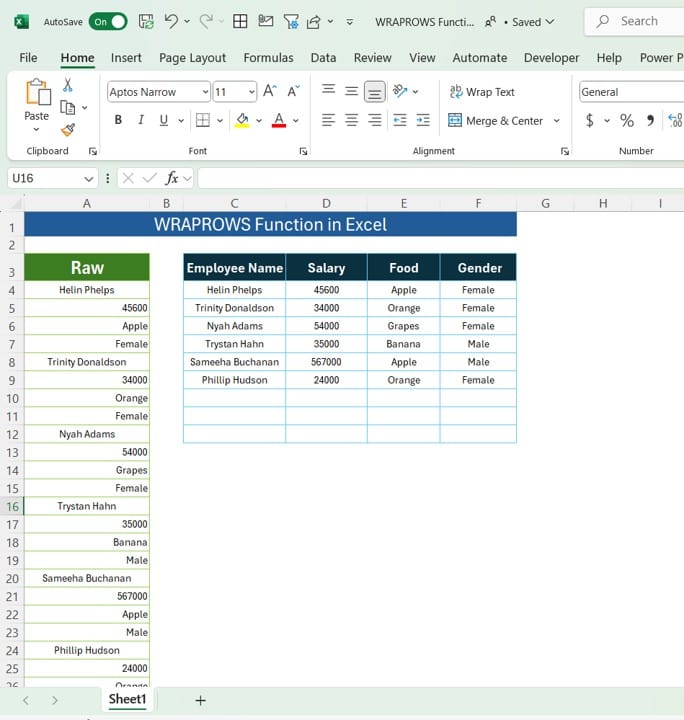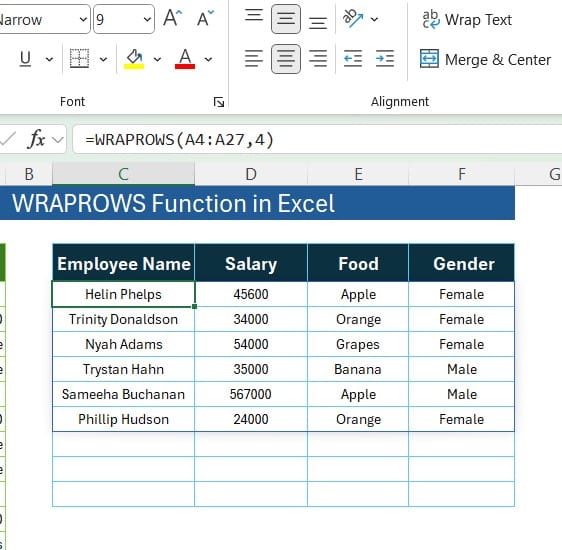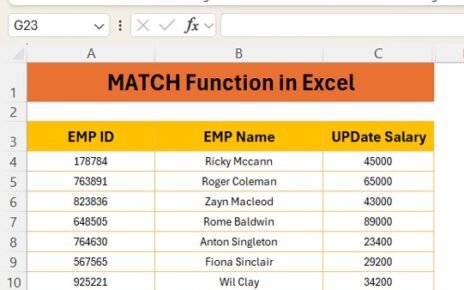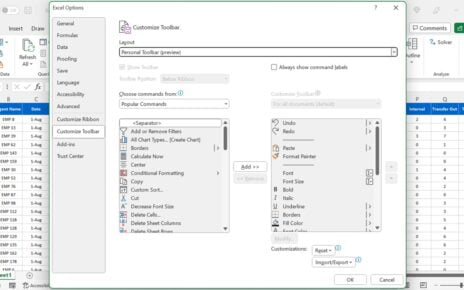If you’re an Excel user looking to improve the way you organize your data, the WRAPROWS Function in Excel is a great tool to explore. This post will guide you through how to use WRAPROWS effectively, using simple examples. Stick with us to learn how this formula works and see how it transforms your data from raw columns to neatly structured rows!
What is the WRAPROWS Function?

The WRAPROWS function in Excel is designed to reshape data in a column into multiple rows. If you’ve ever struggled with long, unorganized data lists, this function can help you wrap the data into rows with a fixed number of columns, making it cleaner and easier to analyse.
Data Overview: What We’ll Work With
Let’s look at a real-life scenario. Below is the raw data we’ll use for this example, placed in a single column in A3
Our goal is to rearrange this data into a proper tabular format using the WRAPROWS function.
What Problem Are We Solving?
The current data is messy—it’s stacked vertically in a single column. Manually rearranging it could take a lot of time, especially with larger datasets. However, with the WRAPROWS function, we can easily convert this vertical column into neatly structured rows with four columns for Employee Name, Salary, Food, and Gender.
WRAPROWS Formula: How to Apply It in Excel

Here’s how you can use the WRAPROWS function to transform your data:
=WRAPROWS (A3:A12, 4)
Explanation of the Formula
- A3: This is the range containing the raw data.
- 4: This number tells Excel to create rows with 4 columns. Each set of 4 values from the column will form one row in the output.
This clean layout allows you to easily view each employee’s name, salary, favorite food, and gender briefly.
Why Use WRAPROWS?
Using WRAPROWS offers several benefits:
- Timesaving: You don’t need to manually rearrange the data.
- Consistency: Ensures uniform row structures across your dataset.
- Flexibility: Adjust the number of columns to fit your needs by changing the second argument.
Conclusion
The WRAPROWS function is a simple yet powerful way to structure raw data in Excel. Instead of wrestling with long columns, you can now format your data into clear, readable rows. Whether you’re working with employee records, product data, or survey results, this function can save you time and effort.
Try using the WRAPROWS function the next time you have messy data and see how easily you can bring order to your spreadsheets!
Visit our YouTube channel to learn step-by-step video tutorials
View this post on Instagram
Click hare to download the practice file



